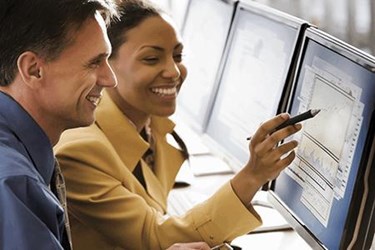How To Get More From Your Remote Monitoring System
By Mike Keenan, Managing Director, Retail Loss Prevention, TAL Global Corporation

Historically, in-store camera systems have been used by Loss Prevention exclusively for identifying shoplifters and conducting investigations. The video review needed to take place in the facility that housed the camera system or the store had to send a clip of the incident to LP.
Remote monitoring has changed all that. When connected, video can now be watched in live or recorded video can be retrieved instantaneously for remote viewing. This saves money, time, and allows for virtual store inspections at anytime from anywhere.
Effective utilization of remote monitoring can be a game changer as it allows for complete utilization of all of the capabilities of their camera systems without going to the store. Users can view virtually anything that can be observed by a camera including real-time activity. They can see entrances, selling floor areas, cash registers, stockrooms, and cash offices. They can look at merchandising, signing, customer traffic, condition of the stockrooms, lines at the registers, etc.
Remote Monitoring enables more frequent inspections by all areas of the company (Store Operations, Merchandising, and Marketing) without travel time or cost. Proper use of this tool will result in improved execution, increased productivity, improved compliance, and reduced loss.
For example, a store manager can use a camera system to monitor the activities in their store that took place when they are not present. They can look at how the merchandise shipment was handled, the flow of lines at the registers, floor coverage, and customer service.
The key is to use remote monitoring as an “extension of leadership.” If a store manager makes observations on video, they should handle their response in the same way they would if they had actually observed the activity while in the store. It should not be a "gotcha" tool. It should be used for recognition as well as correction.
If a store manager can keep awareness of the camera system "top of mind" for the store employees, it will improve productivity and deter internal theft. Why? Because everyone is more productive when a boss is present. By having the boss around “all the time” through remote monitoring — not just when they are physically in the building — people will be more productive and potential theft will be deterred.
To maximize remote monitoring’s effectiveness, store employees should be shown all of its capabilities and understand it is part of how stores are managed. If they understand the capabilities, they will be aware they can be observed at any time through the cameras. This is what makes store employees more productive and less likely to cause loss.
Of course, the store manager is just one user who can make an impact. Corporate leaders in every area of the company can benefit from remote monitoring as well. For example, marketing teams can see how customers react to their signage, merchandising teams can see how their product is displayed on the selling floor, operations teams can see how merchandise is processed from receipt of shipment until it is sold at the register, and field leaders can see how neat and organized the store is all without actually going to the store.
In addition, all this can be accomplished at multiple stores very quickly. Imagine seeing how customer lines are being managed on a major sale day in every one of your stores without leaving your office. Distribution and Fulfillment Centers can get the same benefits from remote monitoring as well.
Remote monitoring is simply creating the capability to observe operations then provide effective feedback to improve performance without traveling to that location. Again, it is critical for users to utilize remote monitoring in a constructive manner. You do not want to create a hostile work environment with this technology. Regular recognition and feedback from the company’s leadership reinforces the deterrent and “impression of control” of the camera system in the minds of the employees, maximizing the benefits without creating a negative work environment.
